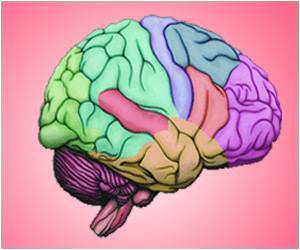Discover the latest advancement in emotion-sensing technology. Learn about the real-time recognition for wearables, optimizing human-machine interaction.
- Personalized skin-integrated facial interface (PSiFI) technology recognizes human emotions in real-time using facial expressions and vocal cues
- This wearable and self-powered system has the potential to revolutionize human-machine interaction in various fields
- PSiFI opens doors for personalized experiences in virtual reality environments and beyond, like smart homes and education
Encoding of multi-modal emotional information via personalized skin-integrated wireless facial interface
Go to source).
PSiFI Unlocks New Era of Human-Machine Interaction
The challenge of accurately capturing human emotions has long plagued researchers due to the subjective and multifaceted nature of emotions. This innovative system tackles this challenge by employing a multi-modal approach, combining both verbal and non-verbal cues to gain a comprehensive understanding of an individual's emotional state.At the heart of PSiFI lies a self-powered, stretchable, and transparent patch seamlessly integrated with the user's skin. This patch houses a unique bidirectional triboelectric strain and vibration sensor, the first of its kind.
This sensor simultaneously captures and integrates data from both facial expressions and vocal cord vibrations, providing a rich tapestry of emotional information. The system seamlessly integrates with a data processing circuit for wireless data transfer, enabling real-time emotion recognition without the need for bulky equipment.
Did You Know?
Emotion AI, also known as Affective Computing, is the field of computer science that enables computers to recognize, interpret, and simulate human emotions.
The technology leverages the principle of "friction charging", where contact between materials generates electrical charges. This eliminates the need for external power sources or complex measuring devices, making the system self-generating and user-friendly.
Professor Kim highlights the customizable nature of PSiFI, stating, "We have developed a skin-integrated face interface system that can be tailored to individual users." This customization is achieved through a combination of techniques, including a semi-curing process for creating transparent electrodes and a multi-angle shooting technique for crafting personalized masks that are both flexible and transparent.
Embrace the Future: Real-Time Emotion Detection Made Possible with PSiFI
The research team successfully demonstrated the system's capabilities by integrating it with a virtual reality (VR) "digital concierge" application. This application tailors its services based on the user's emotional state, offering personalized recommendations for music, movies, and other experiences within the VR environment.The team's research not only showcases the system's high accuracy in real-time emotion recognition but also highlights its wearability and convenience due to its wireless and customizable design.
Furthermore, the successful application of PSiFI in VR environments demonstrates its potential to revolutionize various aspects of human-machine interaction. The system's ability to identify individual emotions in diverse settings, such as smart homes, private movie theaters, and smart offices, opens doors for personalized recommendations and tailored user experiences.
Professor Kim concludes by emphasizing the significance of PSiFI for the future of HMI, stating, "For effective interaction between humans and machines, HMI devices must be capable of collecting diverse data types and handling complex integrated information. This study exemplifies the potential of using emotions, a complex form of human information, in next-generation wearable systems."
To conclude, the development of PSiFI marks a significant leap forward in the field of emotion recognition technology. Its potential applications extend far beyond VR, with implications for various sectors, including healthcare, education, and customer service.
As research continues and technology matures, PSiFI has the potential to redefine the way we interact with machines, ushering in a new era of personalized and emotionally intelligent human-machine interfaces.
Reference:
- Encoding of multi-modal emotional information via personalized skin-integrated wireless facial interface - (https://www.nature.com/articles/s41467-023-44673-2)
Source-Medindia











